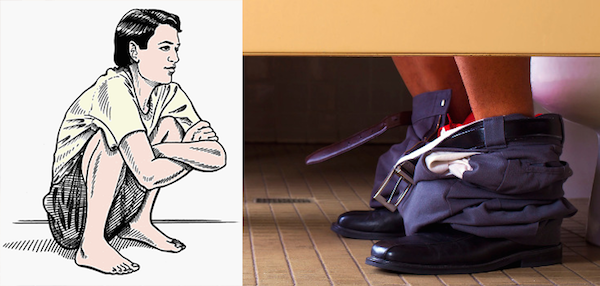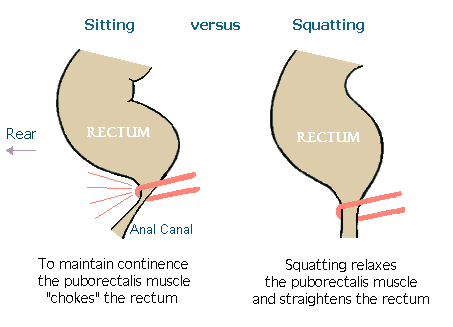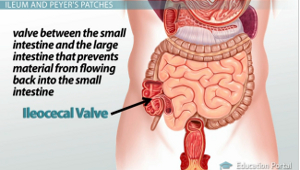How the modern toilet changed things for the worse
Robert Harrington
Natural Society
While this subject matter may not be the most pleasant to read or hear about, for some the return to good health greatly depends on it. Truthfully, our digestion and the way in which we go to the bathroom can have a great impact on one’s health. Keep reading to learn how.
Simply put, human anatomy is designed so that proper elimination is best performed while squatting. There are certain things that occur physiologically by squatting which do not happen when one sits idly on the toilet seat. Herein lies the key to correctly eliminating each and every day.
It’s important to note that we ought to have at least two or three bowel movements every day. Most of us are not. In addition to an inferior diet, the way we sit or squat on the toilet seat will determine the success of this daily habit. Here’s why anatomical posture matters so much:
“This is because the closure mechanism of the gut is not designed to ‘open the hatch completely’ when we’re sitting down or standing up: it’s like a kinked hose. Squatting is far more natural and puts less pressure on our bottoms.” [1]

Image credit: http://www.naturesplatform.com/health_benefits.html
The previous excerpt from a recent MSM article pinpoints a critical problem with the human anatomical position that is unavoidably assumed while sitting on a standard toilet seat. The internal plumbing is actually “kinked” up in such a way so as to discourage a full and unimpeded bowel movement.
“Sitting on a modern toilet places your knees at a 90-degree angle to your abdomen, which actually hinders elimination by pinching off your anal canal, as illustrated in the image below.” [2]
There is another significant reason why bowel movements do not always occur when or as frequently as they should. It is the same reason why many folks have long term, low grade constipation without even knowing it.
“Then there are the sphincters. One of them we probably all know about – the one we open consciously – but there is also another, inner one, which is operated unconsciously. This ani internus sends a sample into the chamber between the inner and outer sphincter for the sensor cells to analyse and decide if it’s ‘safe’ to fart or poo: ‘Yes, you’re at home. No, you’re in the office.’ If it’s not safe, the sensors send it back in. But, if the inner sphincter is ignored enough times – say, because we are too shy to go to the loo for fear of being overheard – it sulks and can switch off. That’s one of the reasons constipation can occur.” [1]

Photo credit: http://www.todayifoundout.com/index.php/2014/04/everyone-hemorrhoids-causes-inflamed-version/
Related: 6 Natural Home Remedies for Hemorroids
Opening of the Ileocecal Valve During Bowel Movements
Lastly, there is one more important factor which contributes to chronic constipation due to improper toilet sitting. That concerns the ileocecal valve, which should be fully open during the process of moving the bowels.
Here, again, squatting ensures that this important valve, which is located where the small intestine meets the large intestine, is open completely so that the flow of intestinal content does not become impeded.
“…The ileocecal valve, which is located between the small and large intestine, serves two purposes. First, it acts as a block that prevents the toxic contents of the large intestine from backing up into the small intestine. Second, it keeps the food products in the small intestine from passing into the large intestine before the digestive processes have been completed. When this valve sticks shut, feces stays in the small intestine, unable to move any further. This back-up causes constipation.” [3]
Conclusion
To squat or not to squat, that is the question. Perhaps if there were props or the right bathroom aid, which assisted in maintaining the squatting position, more people would do so.
(Here are 5 of the best and worst foods for digestion.)
There are products in the wellness marketplace which meet this need. One is called Squatty Potty; another is known as The Welles Step. These and similar products will help quite well with squatting; unless, of course you prefer to squat on the toilet seat itself. That particular practice, however, should be performed carefully assuming the toilet seat is sufficiently large enough.
Sources:
[1] The Guardian
[2] Mercola



